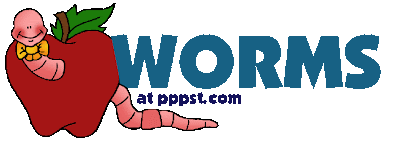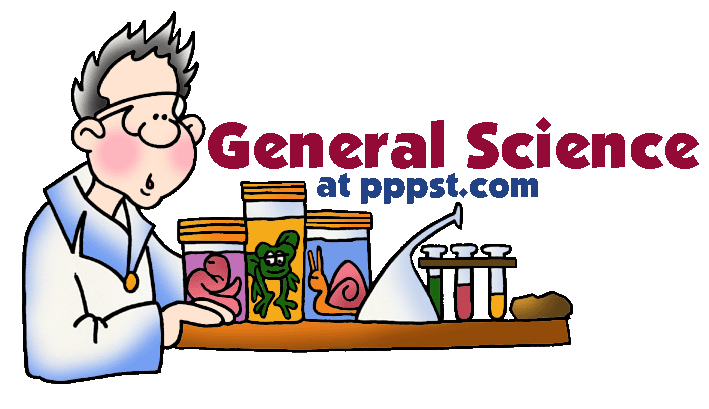Tuesday, January 27, 2009
Monday, January 26, 2009
The food web


Energy to live: In order to live animals need energy. Some animals get the energy they need to live from eating plants and other vegetation. Some animals get their energy from eating other animals. Some animals eat both plants and other animals. Herbivores: Animals that eat plants are called Herbivores. Herbivores have evolved to eat plants. They have specialised teeth and stomachs to enable them to get the energy they need from plants. Carnivores: Animals that eat plants are called Carnivores. Carnivores have evolved to eat meat. They have specialised teeth and stomachs to enable them to get the energy they need from the bodies of other animals. Omnivore: Animals that eat plants and meat are called Omnivores. Humans are omnivores. Omnivores have teeth and stomachs that enable them to eat and digest both plants and meat. Food Web: Food webs show what eats what in order to gain the energy it needs to live. Food webs use arrows to show what eats what. grass zebra lion Producers: Nearly all food webs start with a green plant. Green plants are called producers because they produce their own food. Consumers: Animals are consumers. Some consume plants to get the energy they need to live. Others consume other animals. Prey: Animals that are eaten by other animals are called prey. Some prey animals are herbivores. Some omnivores and carnivores are also prey to other animals. Predators: Animals that eat other animals are called predators. Some animals are predators and prey. This means they eat some animals but are eaten by others. The top predator that is prey to no other animal is called an apex predator. |
The food chain

| The food chain consists of four main parts: The Sun, which provides the energy for everything on the planet. Producers: these include all green plants. These are also known as autotrophs, since they make their own food. Producers are able to harness the energy of the sun to make food. Ultimately, every (aerobic) organism is dependent on plants for oxygen (which is the waste product from photosynthesis) and food (which is produced in the form of glucose through photosynthesis). They make up the bulk of the food chain or web. Consumers: In short, consumers are every organism that eats something else. They include herbivores (animals that eat plants), carnivores (animals that eat other animals), parasites (animals that live off of other organisms by harming it), and scavengers (animals that eat dead animal carcasses). Primary consumers are the herbivores, and are the second largest biomass in an ecosystem. The animals that eat the herbivores (carnivores) make up the third largest biomass, and are also known as secondary consumers. This continues with tertiary consumers, etc. Decomposers: These are mainly bacteria and fungi that convert dead matter into gases such as carbon and nitrogen to be released back into the air, soil, or water. Fungi, and other organisms that break down dead organic matter are known as saprophytes. Even though most of us hate those mushrooms or molds, they actually play a very important role. Without decomposers, the earth would be covered in trash. Decomposers are necessary since they recycle the nutrients to be used again by producers. |
MOLLUSES

Molluscs include all the shelled creatures of the seashore, with the exception of the barnacles. Molluscs are abundant in the region between high and low tide and are a major feature of all rocky ocean shores. Molluscs form one of the largest groups in the animal kingdom, with more than 80,000 known species. Molluscs form a very well defined group and although their outside features may vary greatly in form and colour, their internal structure is constant.
ARTHROPODS

Arthropods are animals with segmented bodies and six or more jointed legs. They are the largest animal group on Earth. In fact, more than three out of four of all animals are arthropods. They are found everywhere - on land, in trees, in freshwater and saltwater, and even underground. Arthropods are generally small. Most are less than 1 cm long. Some arthropods, however, are quite large. The giant king crab, for example, measures over 3.2 m from the tip of one outstretched leg to another. Some of the most familiar arthropods are butterflies, beetles, flies, ants, bees, spiders, scorpions, shrimp, and crabs.
Sunday, January 25, 2009
COELENTERATES

This is the common name for 9 000 species of invertebrate animals found in all oceans of the world.These include:Coral, jellyfish and sea-anenome.Some are cylindrical with the mouth and tentacles at one end.Jellyfish look like an opened umbrella with tentacles hanging.All coelenterates capture their prey in the tentacles and then kill them with poison from the stinging organ.
ECHINODERMS

Echinoderm is a common name for about 6 000 living species that live at all depths in all of the oceans of the world . These include:Starfish, sea-cucumbers and sea-urchins.Starfish have a mouth surrounded by 5 arms. At the ends of the arms are fleshy tube feet which the starfish uses to cling to things and to crawl about.Sea-urchins have spines that are very well developed.Echinoderms have simple nervous and circulatory systems.
WORMS

These are animals whose bodies are divided into a number of similar rings.The head tapers to a point.The tail is broad and flat.Pores on the skin cover its body with slime. This slime keeps the worm clean, makes it slippery and kills germs.The pointed nose drills into the soil and the flat tail presses it tight.The slime is then used to cement the burrows.
FISH
REPTILES & AMPHIBIANS
 REPTILES
REPTILESCold blooded vertebrates. This means they cannot maintain a body temperature much different than their environment.Most reptiles lay eggs with hard shells. Young fully formed reptiles hatch from the eggs. Reptiles usually lay their eggs in sand.Some snakes and lizards retain their eggs in their body and give birth to live young.Young reptiles have to care for themselves from the time they hatch.A reptile's skin is usually covered with scales.Reptiles have been on earth for over 300 million years - that is a very long time!
AMPHIBIANS
Cold blooded vertebrate animals that generally spend their larval or tadpole stage in fresh water. They do not transfer to the land until they are mature, returning to the water to breed.Amphibians were the first animals to venture on to land. They emerged from the oceans over 300 million years ago. Frogs, toads and salamanders are amphibians.
BIRDS

Warm blooded vertebrate animals with wings and bodies covered with feathers for warmth and to help them to fly. Birds have lungs for breathing and a heart with four chambers.All adult birds are covered in feathers even though some are born naked.The female lays the eggs and the young hatch from these. The young are cared for by the adult birds until they are old enough to fend for themselves.
MAMMALS

Warm blooded vertebrate animals which have hair or fur.Retain the young in their bodies until they are ready to be born. When the young are born they are fed by the mother on milk.Mammals have a highly developed nervous system. They live on land and in the sea.There is a very wide range of types in this group.The largest mammal is the blue whale which often exceeds 30m in length. Shrews, mice and mice which are the smallest are often less than 5cm, excluding their tail.Human beings are mammals.
Animal Kingdom

The animal kingdom is made up of two main groups VERTEBRATES and INVERTEBRATES.
VERTEBRATES:Animals with backbones are called
VERTEBRATES.Some VERTEBRATES are:Mammals, Birds, Reptiles,Amphibians and Fish.
VERTEBRATES.Some VERTEBRATES are:Mammals, Birds, Reptiles,Amphibians and Fish.
INVERTEBRATES:Animals without backbones are called
INVERTEBRATES. Some INVERTEBRATES are: Molluscs,Worms, Arthropods,Echinoderms and Coelenterates.
INVERTEBRATES. Some INVERTEBRATES are: Molluscs,Worms, Arthropods,Echinoderms and Coelenterates.
Saturday, January 24, 2009
Example of Scientific Method

Let’s put our knowledge of the Scientific Method to a realistic example that includes some of the terms you’ll need to use and understand.
Problem/Question
Jane watches her grandmother bake bread. She asks her grandmother what makes the bread rise.
She explains that yeast releases a gas as it feeds on sugar.
Jane wonders if the amount of sugar used in the recipe will affect the size of the bread loaf.
Observation/Research
Jane researches the areas of baking and fermentation and tries to come up with a way to test her question.
She keeps all of her information on this topic in a journal.
Jane talks with her teacher and she gives him a Experimental Design Diagram to help her set up her investigation.
Formulate a Hypothesis
After talking with his teacher and conducting further research, she comes up with a hypothesis.
“If more sugar is added, then the bread will rise higher.”
The hypothesis is an educated guess about the relationship between the independent and dependent variables.
The independent, or manipulated variable, is a factor that’s intentionally varied by the experimenter.
Jane is going to use 25g., 50g., 100g., 250g., 500g. of sugar in her experiment.
The dependent, or responding variable, is the factor that may change as a result of changes made in the independent variable.
In this case, it would be the size of the loaf of bread.
Experiment
Her teacher helps her come up with a procedure and list of needed materials.
She discusses with Jane how to determine the control group.
In a scientific experiment, the control is the group that serves as the standard of comparison.
The control group may be a “no treatment" or an “experimenter selected” group.
The control group is exposed to the same conditions as the experimental group, except for the variable being tested.
All experiments should have a control group.
Because her grandmother always used 50g. of sugar in her recipe, Jane is going to use that amount in her control group.
Jane’s teacher reminds her to keep all other factors the same so that any observed changes in the bread can be attributed to the variation in the amount of sugar.
The constants in an experiment are all the factors that the experimenter attempts to keep the same.
They might include:
Other ingredients to the bread recipe, oven used, rise time, brand of ingredients, cooking time, type of pan used, air temperature and humidity where the bread was rising, oven temperature, age of the yeast…
Jane writes out her procedure for her experiment along with a materials list in her journal. She has both of these checked by her teacher where she checks for any safety concerns.
Trials refer to replicate groups that are exposed to the same conditions in an experiment.
Jane is going to test each sugar variable 3 times.
Collect and Analyze Results
Jane comes up with a table she can use to record her data.
Jane gets all her materials together and carries out her experiment.
Size of Baked Bread (LxWxH) cm3
Size of Bread Loaf (cm3)
Trials
Amt. of Sugar (g.) 1 2 3 Average Size (cm3)
25 768 744 761 758
50 1296 1188 1296 1260
100 1188 1080 1080 1116
250 672 576 588 612
500 432 504 360 432
Jane examines her data and notices that her control worked the best in this experiment, but not significantly better than 100g. Of sugar.
Conclusion
Jane rejects her hypothesis, but decides to re-test using sugar amounts between 50g. and 100g.
Experiment
Once again, Jane gathers her materials and carries out her experiment.
Here are the results.
Size of Baked Bread (LxWxH) cm3
Size of Bread Loaf (cm3)
Trials
Amt. of Sugar (g.) 1 2 3 Average Size (cm3)
50 1296 1440 1296 1344
60 1404 1296 1440 1380
70 1638 1638 1560 1612
80 1404 1296 1296 1332
90 1080 1200 972 1084
Conclusion
Jane finds that 70g. of sugar produces the largest loaf.
Her hypothesis is accepted.
Communicate the Results
Jane tells her grandmother about her findings and prepares to present her project in Science class.
Subscribe to:
Comments (Atom)

























